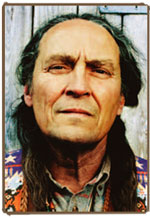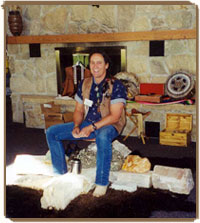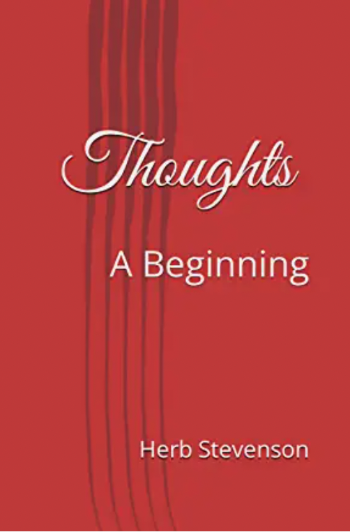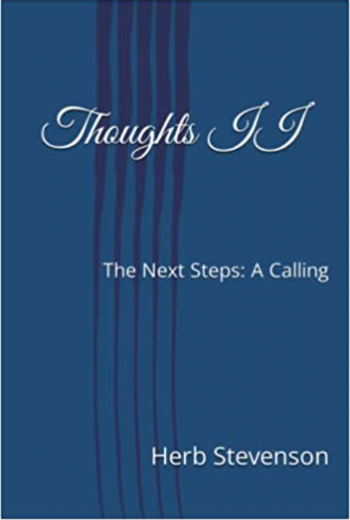Only in America: Being A Native American OD Consultant
by Herb (One White Horse Standing) Stevenson,
as submitted to The Diversity Factor, March 2010.
Introduction
I have been an Executive and Organization consultant for nearly 30 years. During that time, I have experienced many forms of prejudice, shifts in awareness, and absolute frustration. This article shares parts of my ancestry and of my journey as a Native American OD Consultant.
Background
 I often introduce my self as biracial, multinational, and semi-sane. It is a statement of being Native American/Caucasian, Shawnee, Cherokee, German, and Welsh, and living in America. It is a statement to reduce common stereotypes that suggest my long hair is a carry-over from the hippie era instead of being a role model for native American children that it is okay to look native American.
I often introduce my self as biracial, multinational, and semi-sane. It is a statement of being Native American/Caucasian, Shawnee, Cherokee, German, and Welsh, and living in America. It is a statement to reduce common stereotypes that suggest my long hair is a carry-over from the hippie era instead of being a role model for native American children that it is okay to look native American.
I was raised in a rural village in Ohio. It was originally a native village at the fork of two scenic streams, the Greenville Creek and the Stillwater River. In time, the village became a trading post, then grew into Fort Rowdy, where inter-racial marriages were encouraged. Most of the “Indian” wars were fought in the area when General Mad Anthony arrived with orders to eliminate the savages. He despised intermarriages, so he marched 15 miles west to establish a new and pure Fort Greenville. Like Custer, his counterpart in the west, Mad Anthony Wayne was a government sanctioned racist. We found it humorous that while Lincoln signed the Emancipation Proclamation to free the slaves he established an edict for the War Department to resolve the savage problem by forced removal, intentional small pox infestation, and food poisoning. Over time, Fort Rowdy became Covington, Ohio. A place known mostly for farmers, good fishing, and football players.
Many of the people are biracial. Most folks don’t want to know about their native heritage as it was considered taboo to discuss or claim. It was learned that people tend to live longer by not being red. To reinforce the taboo, children were often threatened with being “sent back to the Indians” if they did not behave. This was reinforced later in life when a colleague noted that she was Blackfoot and African-American. As a child, her grandmother told her to never tell anyone that she was native American, because white folks treat natives worse than they treat blacks.
My great grandfather was the mayor and local healer. He used various herbs to heal the towns people for several decades, then a Medical doctor arrived. My great grandfather suddenly forgot everything he knew. The townspeople knew it was not good to openly be red. The government sanctioned medical bigotry to eliminate thousands of years of healing history and knowledge. Anyone practicing medicine without a medical license would be put in jail.
My father was gifted with healing prayers. He could pray over a burn and it would vanish. He never talked about it and would ridicule such foolishness when directly asked if he could heal burns. Often, he would deny any healing powers while the burn was disappearing. Then, he would laugh that it must have been their imagination as there was no burn. Folks knew not to openly talk about healing burns.
Consulting Career
In the 1980’s, I entered consulting as a turnaround specialist and regulatory compliance expert for the banking industry. Ten successful bank turnaounds and publication of 26 books on banking, I sat at the top of my game. Approaching 40, I yearned for more than career and material success. I yearned to understand more about myself and my heritage, very much to the dismay of my family.
As I explored my native heritage, I discovered that three of my grandparents had native blood. I decided to experience being more naive and grew my hair, and I learned many of the ceremonies and rituals such as sweatlodges, sundances, and pipe ceremonies. During this process, clients for the prior 15 years, suddenly asked questions such as are Indians baptized and repeatedly questioned my competency. Suddenly, my intelligence and accomplishments were in question. In six months, word spread quickly that I had gone native and 70% of a large six figure consulting practice dried up. One client went so far as to say that if I would cut my hair and look less native, they would consider rehiring me. I repeated it to verify what had been said. They verified it, then called back to “make sure I had not misunderstood” and changed the story completely. Having served in the U.S. Marine Corps and earned two meritorious promotions, I suddenly had a completely different understanding of “home of the brave and land of the free”.
I found my quest for understanding my heritage undaunted. I was enrolledin the Cleveland State University’s Diversity Management program to learn about diversity and myself. I received my Master’s degree and simultaneous Diversity Management certification from NTL. I suddenly understood racism and myself in ways that had been blind to me. I understood America in a totally different way. Not only is freedom, not free, its not for everyone.
Shift to Executive
and Organization Development
 I had received very little support from my partner in the consulting
practice during this process, so I sold out and started a new consulting firm, the Cleveland Consulting Group, Inc. My focus was to move further into inclusivity as a core competency of all executives and organizations.
I had received very little support from my partner in the consulting
practice during this process, so I sold out and started a new consulting firm, the Cleveland Consulting Group, Inc. My focus was to move further into inclusivity as a core competency of all executives and organizations.
The road has been full of landmines as native Americans remain outside the awareness of this country unless a native American forces the issue. We are invisible to American consciousness. For example, when participating in a roundtable discussion about hiring minorities at a SHRM conference, there was an African-American, Latino (Hispanic), and Caucasian Agism expert and myself. Throughout each of their discussions, they referred to each other with appropriate respect and inclusivity. Not once was there any reference to native Americans as a subordinated group or myself as a member of the panel. When I spoke, I noted it as an example of how native Americans are outside the awareness of othersubordinated groups and in particular HR hiring specialists. I did not find it malicious, but I noted that I found it dismaying that Native Americans simply do not reside in normal every day American awareness, regardless of race, age, sex, etc.. I spent the rest of the session informing them on graduating rates, percentage of graduate degrees, and how to find native American job applicants.
In another situation, I was part of a team of colleagues. Several were diversity professionals with years of experience. We were providing a training program on teams and small group dynamics. Out team was comprised of four white women, one male from Ghana, one native American male, and one gay male. As the design began, three of the seven worked together in a consulting firm and formed a subgroup that took control of the design. Initially, this was not bothersome as it appeared that we were still a team. As it progressed, the subgroup consumed the training responsibilities for the first three of five weekend sessions with the exception of one hour presentations for the native American and the man from Ghana in the third week. Each was to represent how his “people” would address team dynamics. I was distressed as it felt like tokenism. I had more experience in team dynamics in organizations than any other the members of the subgroup, and yet I was being subordinated to “talk about my people”. I asked other team members if they saw what I saw. They said they did and they preferred not to name it or deal with the subgroup of team members. I was appalled and suddenly felt the invalidation of my existence and an existential crisis ensued. I suddenly understood how the invalidation was silencing my voice within the group.
For weeks, I struggled with what to do. I knew the participants were a mix of Black, White, Asian, and biracial people. I decided to use my bi-raciality as the frame of reference and to use the experience to teach how white corporate Americans and native Americans would address the issue. As corporate Americans, often, the expectation is to suck it up and take one for the team. As a native American, it is believed that there is something wrong with the community for such divisive subgrouping to occur and to be allowed to lead the group. And, as a biracial American , the experience is crazy-making because there is cultural confusion of what to feel and how to act.
The teaching was received with mixed reviews. The three white faculty were enraged. The white participants were embarrassed, and the Asian, Black, and biracial participants were grateful for naming the differences, and how it can cause such deep cognitive and emotional dissonance. Later, the faculty subgroup attempted to publicly chastise me for teaching the dynamics in the class, though they admitted that indeed everything I had said was true and did in fact occur. For me, it was a clear example of how unconscious group discrimination occurs, and how the offending group, or subgroup in this instance, will move from a group level of system to the individual level of system when brought to conscious awareness.
For example, the subgroup’s reaction prevented them from seeing the larger dynamic of their behavior thereby creating a further barrier to their eliminating the discriminating behavior. More specifically, when a group dynamic occurs, the initial discriminating act creates humiliation in the target group that invokes an invalidating process of a shame-like experience of not deserving to exist. (See Donald Klein’s work on Shame and Humiliation). If able to recognize that the invalidation is other created, it is possible to overcome it. Otherwise, it becomes another social shaming experience. In this case, it had taken several excruciating weeks to muster the courage or desperation to address the issue obliquely through the teaching process. Remember there was no group support to correct the dynamic prior to the token hour of teaching.
When I was able to overcome the humiliation caused by the subgroup group and name the act, the situation becomes quite convoluted and complex. First, I chose to breach the American and commonly corporate social contract to not name such acts of humiliation. Second, this breach led to the potential for an embarrassing and shameful experience for the offending group. (See Chris Argyris’s work) Third, if the offending group has the capacity to stay present and experience the naming process, including the inappropriateness of the behavior, tremendous insights can occur that will lead to new awareness and behavior. Fourth, if the offending group cannot stay present to the naming experience, personal shame can occur and they will often become enraged. Fifth, when this occurs, it is common for the offending group to project their involvement and responsibility back onto the original source, me, and to further humiliate by acting as if the entire process was the fault of the originally spurned group as occurred to me in this situation.
My learning from the situation was that I need to be clear of my expectations when working with groups. Not setting them puts me into uncompromising situations where the team might not be able to hold the unconscious and unintentional acts to humiliate. Furthermore, I own that I had assumed that the team was beyond such unconscious acts of discrimination because of their individual diversity training. That assumption was extremely naive. As a people, this country has a lot of unconscious bias and bigotry as evidenced by my initial example at the SHRM conference that idicates regardless of race, color, creed, etc, most of America does not consciously acknowledge native Americans and therefor denies our existence. We are a country of wanting “our own” to the exception of others.
Recent Example
Over the years, as noted in the initial paragraphs, I introduce my self as biracial native American when ever I start a contract. I disclose that I teach native American spirituality around the country, I founded an international, cross cultural men’s program called Natural Passages, (www.natural-passages.com) and I specialize in executive and organization development.
Recently, I met and was hired by a President of a college. I was to work with him for one year to enhance his leadership skills, then work with him to enhance his effectiveness with his direct reports. Within the second year, we would work to enhance the leadership skills of his direct reports. I was excited as he was well-published on diversity issues and the school supported an annual symposium on religious diversity.
After the negotiations and final terms were in agreement, he chose to meet with his direct reports. We had prior agreed that we would talk with his staff jointly to avoid any misunderstanding and potential unconscious resistance; however, he chose to override our agreement and shared the project with the team.
After informing his group, they went into hyper-drive to uncover everything and anything about me. On my native American website, www.onewhitehorsestanding.com, they found the words shaman and shamanism. They boldly went to the President as a team and informed him that being associated with me would destroy his career. Clearly, shamanism is heathenism at best and satanism at worst. The President bought the fear-induced arguments hook, line, and sinker. He called me and conveyed their concerns and that he had decided to support his team’s findings and goal to protect his reputation.
I responded that I found it intriguing that he was advocating religious bigotry. When I noted that the literal meaning of shaman is holy one and shamanism is nature based spiritual practices, he rebuked me for questioning his logic and decision. He was not a bigot and his act was not religious bigotry. When I noted that I was a member of the Church of the Brethren, he further rebuked me. I suddenly realized that the Salem witch trials were being applied to me. He chose to follow his self serving needs to assuage his personal fears of looking bad and what was to come in our executive development process. I was reminded that every where we go, there we are...shadow and all.
Conclusion
It would be very easy for me to become cynical, yet I remain hopeful. My consulting practice is growing based on more acceptance than even five years ago. There are pockets of bigots in every country so why should I think that America is any different. What I am paying attention to is the number of executives who are interested in their own native heritage. The length of my hair rarely is a problem except for an occasion joke from a balding man teasing that I should share. More over, my work is one person at a time with people at the top of the organization. The true policy makers. Each breakthrough with these people impacts many other people within the organization. I yearn for when we become All One Tribe.
Bio
Herb Stevenson, MA, CDP, CPC Cleveland Consulting Group, Inc.
Herb Stevenson is President/CEO of the Cleveland Consulting Group, Inc., where he focuseson organizations that recognize that business is more than a problem to be solved.
Herb is Chair of the Executive and Organization Development programs at the Gestalt Institute of Cleveland. Herb is on the graduate faculty of Cleveland State University where he teaches assessment and diagnosis, facilitation, change management, and conflict settlement in the Master’s degree program in Organizational Psychology with a diversity management specialization. He is adjunct faculty for the post-graduate College of Executive Coaching, which certifies executive coaches in affiliation with the International Coach Federation (ICF). He is a member of the Organization Development Network (ODN), the International Coach Federation (ICF), and the Academy of Management.

 Thoughts, A Beginning
Thoughts, A Beginning Thoughts II
Thoughts II Thoughts III: Creating the Container
Thoughts III: Creating the Container